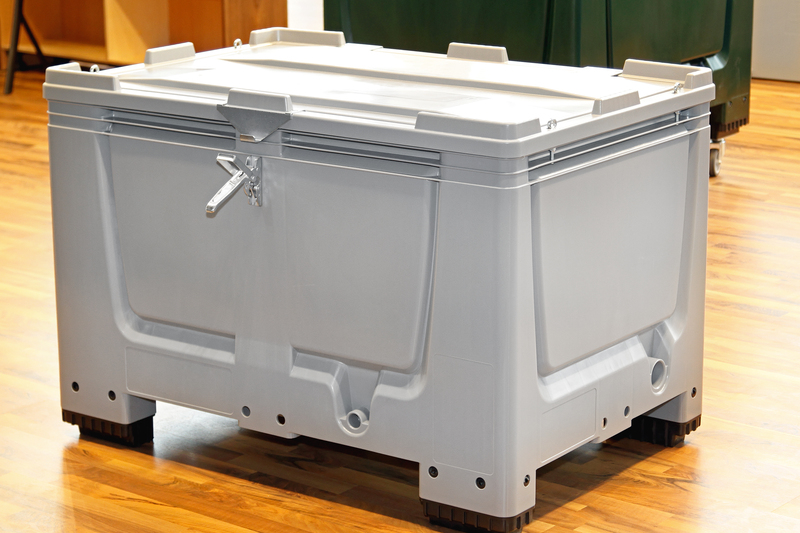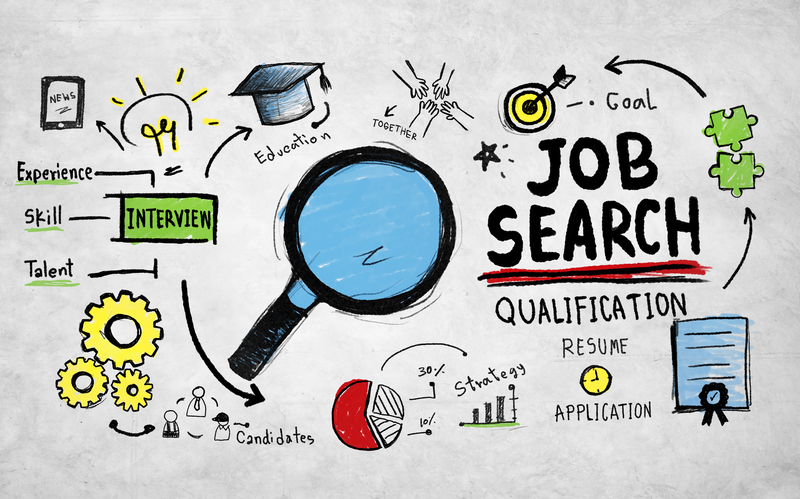Piano Moving Skills: Professional Help vs DIY
Posted on 30/05/2025
Piano Moving Skills: Professional Help vs DIY
Moving a piano is a challenging process that demands meticulous planning, teamwork, and specialized know-how. The sheer weight and delicate structure of pianos make them one of the most difficult household items to move. Whether you're a passionate music lover, a beginner, or a proud owner of a grand or upright piano, deciding between hiring professional piano movers or attempting a DIY move is a significant decision. This comprehensive guide explores the essential piano moving skills, compares professional help versus doing it yourself, and provides valuable tips to ensure the safety of your instrument - and yourself.

Understanding the Complexity of Moving a Piano
The Anatomy of a Piano
Pianos are intricate musical instruments, containing thousands of moving parts, delicate keys, strings, and a finely tuned soundboard. Larger pianos, like grand pianos, can weigh upwards of 1,000 pounds (450 kg), while upright pianos are typically between 300-500 pounds (136-226 kg). The combination of weight, size, and fragility makes moving a piano a unique challenge requiring specific piano moving skills.
Why is Piano Moving So Difficult?
- Weight Distribution: Pianos have irregular weight distribution, making them awkward to balance and carry.
- Fragility: The internal components are sensitive to shocks and bumps. One wrong move could damage tuning pins, strings, or the casing.
- Size: Navigating stairs, narrow hallways, or tight corners can be a logistical nightmare without proper experience and equipment.
- Value: Pianos can be emotionally and financially valuable, sometimes considered family heirlooms or significant investments.
The Essential Piano Moving Skills
Whether you hire experts or go the DIY piano moving route, certain skills and techniques are fundamental to ensure a safe, damage-free relocation.
Key Skills for Safe Piano Moving
- Strategic Planning: Mapping out the route in advance to avoid obstacles and anticipate challenges.
- Use of Specialized Equipment: Dollies, straps, moving blankets, and skid boards are crucial. Never attempt to move a piano without the right tools.
- Teamwork: Piano moving is not a one-person job. It requires at least 3-4 people for balance and lifting, especially when navigating stairs.
- Proper Lifting Technique: Knowing how to bend, lift, and shift weight without risking injury is essential.
- Securing the Piano: Ensuring all loose parts - the lid, keyboard cover, pedals - are protected and securely fastened before the move.
Professional Piano Movers: What Sets Them Apart?
Expertise and Experience
Professional piano movers possess years of specialized experience. They've encountered every possible moving scenario: spiral staircases, sharp corners, multi-story buildings, and more. Their familiarity with a variety of pianos -- from baby grands to digital uprights -- ensures they can adapt their methods to your specific instrument.
Benefits of Hiring Piano Moving Professionals
- Specialized Tools and Equipment: Most movers come prepared with piano boards or skids, heavy-duty straps, and protective blankets designed for fine instruments.
- Insurance Coverage: Licensed piano movers provide insurance, offering financial protection should any damage occur.
- Minimized Risk of Injury: Heavy lifting is a leading cause of home injuries. Professional teams know how to avoid injuries through correct techniques and teamwork.
- Efficient and Safe Transport: Professionals efficiently maneuver your piano through narrow spaces, stairs, or elevator rides, reducing the risk of damage to your home and instrument.
- Post-Move Services: Many companies offer tuning and minor repair services after the move, ensuring your piano's playability is maintained.
How Much Does Professional Piano Moving Cost?
Pricing varies based on distance, piano size, and obstacles like stairs or long carries. On average:
- Local upright piano move: $150-$400
- Local grand piano move: $300-$650
- Long-distance moves: $500-$2,500 (depending on the details)
Though more expensive than DIY, these costs often pale in comparison to the price of repairing or replacing a damaged piano.
DIY Piano Moving: Risks, Challenges, and Skills Required
DIY Piano Moving: When Might it Make Sense?
Some situations might tempt you to tackle piano moving yourself:
- Short distance (within the same room or floor)
- Relocating a small, lightweight piano (like a spinet or console)
- Availability of several strong helpers
- Access to dollies, straps, and moving blankets
However, it's crucial to recognize the considerable risks involved.
Common DIY Piano Moving Mistakes
- Underestimating the Weight: Pianos are much heavier than they look. One slip can cause serious injury or property damage.
- Lack of Protection: Inadequate wrapping leads to scratches, chips, or internal damage.
- Improper Lifting: Lifting with your back or using too few people can result in strained muscles or dropped pianos.
- No Insurance: If you damage the piano or it falls, you're liable for all the repair (or replacement) costs.
- Using Wrong Tools: Standard furniture dollies may not be strong enough or properly balanced for a piano's unique shape and weight.
Essential DIY Piano Moving Tips
- Gather a Strong, Reliable Team: At least 3-4 adults in good physical condition should assist.
- Plan Your Route Thoroughly: Measure doorways, hallways, and stairwells. Remove obstacles in advance.
- Use Proper Equipment: Secure heavy-duty straps, lifting harnesses, furniture dollies, moving blankets, and piano skids.
- Wrap the Piano Carefully: Protect all surfaces with thick blankets secured with tape or shrink wrap.
- Secure Loose Parts: Remove the music stand, lock the keyboard lid (if possible), and secure the pedals.
- Communicate Constantly: Everyone involved should know the next step and move in unison.
- Don't Rush: Move slowly and deliberately, especially on stairs or uneven terrain.
- Never Move a Grand Piano Upright: Grand pianos should be disassembled and moved on their side with the proper skid board.
Potential DIY Cost Savings
You might save on labor costs, but must factor in:
- Rental of moving equipment ($40-$100 or more)
- Materials (moving blankets, straps, tape)
- Potential costs for repairing floors, walls, or the piano in case of accidents
In some cases, DIY may save money. But if anything goes wrong, hidden costs can far outstrip the price of hiring professionals.
Comparing Professional Piano Movers vs DIY: The Ultimate Showdown
| Criteria | Professional Movers | DIY Moving |
|---|---|---|
| Expertise | Specialized training, vast experience | Depends on your skill & experience |
| Equipment | Top-grade, piano-specific tools | Must rent/gather DIY equipment |
| Risk of Damage | Very low, insured and mitigated | High, no insurance or expertise |
| Risk of Injury | Minimal - proper techniques & teamwork | Significant risk, especially with heavy lifting |
| Convenience | Very high - stress-free, hands-off | Low, physically demanding & requires planning |
| Costs | Higher upfront, no hidden damages afterward | Lower upfront, risky for potential high costs |
When Should You Absolutely Hire a Professional Piano Mover?
- Grand or Baby Grand Pianos: Moving larger pianos involves partial disassembly and specialized equipment.
- Multiple Flights of Stairs or Tight Spaces: Navigating difficult architecture increases risk and complexity.
- Valuable or Antique Instruments: Protect your investment; accidents happen quickly and repairs are costly.
- Long-Distance Moves: Professionals have appropriate transportation and packing materials for safe travel.
- No Capable Helpers: Never attempt solo piano moving.
- Limited Access to Equipment: It's not advisable without professional-style tools.
For most situations, especially those involving upright grand pianos, stairs, or valuable instruments, choosing professional piano movers is the safest bet.
DIY Piano Moving: When is it Feasible and Safe?
- The piano is a smaller upright (spinet or console)
- You're moving on the same level, with no stairs
- You have access to at least four strong helpers and appropriate tools
- You're moving a short distance and can take your time
If you meet all these criteria, you may consider moving your piano yourself. Never attempt a DIY piano move if you are in doubt about your ability to complete it safely.
Protecting Your Piano After the Move
Whether you move the piano yourself or hire a professional, the job doesn't end when the piano is in its new location. Here's how to ensure it stays in top condition:
- Let it Acclimate: Temperature and humidity changes can affect tuning. Wait a week before tuning after a move.
- Inspect for Damage: Check all keys, pedals, and the case for signs of damage.
- Schedule a Professional Tuning: Pianos fall out of tune after a move, even with the best care. Hire a reputable piano technician.
- Monitor Humidity: Maintain stable indoor humidity to prevent warping or cracking.
- Reposition Carefully: Avoid placing your piano near heat sources, windows, or external walls.
Bonus Tip:
Take pictures of your piano before, during, and after the move. This documentation helps in case you need to file an insurance claim or check for new damage.

Final Verdict: Professional Piano Movers vs DIY
Moving a piano is a specialized task that demands more than brute strength. It requires knowledge, proper equipment, teamwork, and a high regard for safety. While DIY piano moving is possible for short, simple moves with the right help and tools, the risks often outweigh the rewards.
If your piano is a cherished part of the family, a valuable antique, or simply an instrument you use every day, professional piano movers provide peace of mind and protection for your investment. Their expert piano moving skills, experience, and insurance mean fewer worries and a greater chance of your precious piano arriving unharmed and ready to play in its new home.
When it comes to piano moving, the advice is clear: if you have any doubts, let trained professionals handle your piano move. The investment in expertise is minor compared to the potential cost - financially and emotionally - of a damaged instrument or injury.
Piano Moving FAQs
- Can any moving company move a piano?
No, not all movers have piano moving experience or the right equipment. Always ask about their piano moving skills and track record before hiring. - What's the cheapest way to move a piano?
DIY may be cheaper upfront but carries hidden risks. For valuable pianos, professional help is often safer and more cost-effective in the long run. - How do I prepare my piano for a move?
Close and lock the keyboard lid, wrap all surfaces, secure loose parts, and remove decorative items. If possible, hire a professional for disassembly and reassembly. - How soon should I tune my piano after moving?
Wait at least one week for the instrument to acclimate before tuning.
For further reading on moving other large household goods or ensuring your musical instrument's longevity, stay tuned to our tips and guides!





